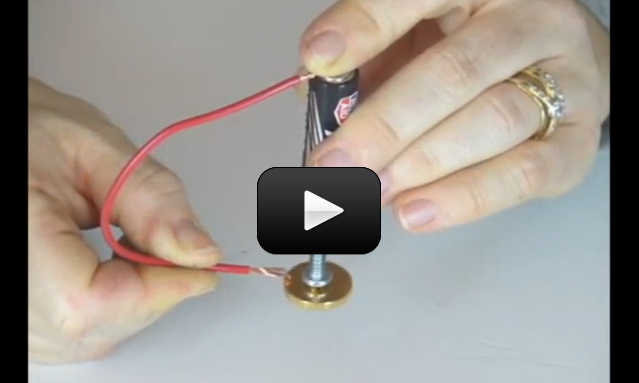Find a spare magnet – one you really don’t care about. Bring it up close to another magnet to find where the north and south poles are on the spare magnet. Did you find them? Mark the spots with a pen – put a N for north, and a S for south. Now break the spare magnet in half, separating the north from the south pole. (This might take a bit of muscle!) You should have one half be a north magnet, and the other a south. Or do you?
One of the big mysteries of the universe is why we can’t separate the north from the south end of a magnet. No matter how small you break that magnet down, you’ll still get one side that’s attracted to the north and the other that’s repelled. There’s just no way around this!
If you COULD separate the north from the south pole, you could point a magnet’s south pole toward your now-separated north pole, and it would always be repelled, no matter what orientation it rotated to. (Normally, as soon as the magnet is repelled, it twists around and lines up the opposite pole and snap! There go your fingers.) But if it were always repelled, you could chase it around the room or stick a pin through it so it would constantly move and rotate.
Well, what if we sneakily use electromagnetism? Note that you can use a metal screw, ball bearing, or other metal object that easily rotates. If your metal ball bearing is also magnetic, you can combine both the screw and the magnet together.
Famous scientist Michael Faraday built the first one of these while studying magnetic and electricity, and how they both fit together. What to see what he figured out?
Here’s what you do:
[am4show have=’p8;p9;p11;p38;p92;p21;p48;p106;p77;’ guest_error=’Guest error message’ user_error=’User error message’ ]
Materials:
- AA battery
- small screw
- wire (stripped on both ends)
- very strong magnet (disc-shaped)
Download Student Worksheet & Exercises
Note: In case you missed it on the shopping list, you can order the disc magnet here.
The current from the battery is flowing through the wire, creating a magnetic field around the wire, which interacts with the magnetic field in the gold disk magnet. Since the wire creates a magnetic field that is perpendicular to the field in the gold magnet, the magnet feels a push, which causes it to rotate. Watch your fingers on this experiment – if you’re not careful and leave your wire contacting the magnet too long, you’ll roast your battery (and that’s really bad).
Exercises
- How does this experiment work?
- What happens if you reverse the polarity and attach the screw to the negative side of the battery?
- How do you get your motor to spin the fastest?
[/am4show]


Sorry you missed it – it is listed on the material list for Unit 11 here: https://www.sciencelearningspace.com/standardcontent/docs/unit11-shoplist.pdf called “gold cubes” and has a direct link to where you can order them online.
Also please note: the gold part isn’t important (at the time I created this video, it was the only one easily available, as gold is used in electronics quite a bit). Now there are nickel-plated magnets that work as well, and they are inexpensive. You just need a magnet that also conducts electricity is what we’re going for.